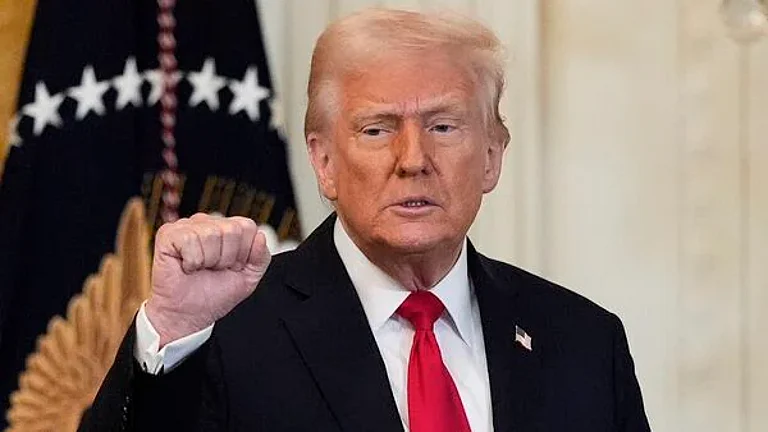A day after US President Donald Trump's Liberation Day reciprocal tariff rollouts, a revised White House document on Friday created confusion as it showed that the rates have been revised for at least 14 countries, including India. On April 2, Trump announced revised and hikes tariff rates against almost all countries.
Initially, India was charged with a 27 percent tariff rate as against the 26 per cent shown previously by Trump. However, the revised list of tariff rates showed it as 26 percent.

On April 2, Trump alleged that the reciprocal tariff has been slapped on the fifth-largest economy as New Delhi has not been treating Washington 'right'.
According to a report by The Economic Times, besides India, South Korea's rate also faced fluctuation. Initially, it was set at 25 percent which later jumped to 26 per cent in the annex, and has now reverted back to 25 percent again.
Besides India and South Korea, other countries which experienced similar fluctuations include Botswana, Cameroon, Malawi, Nicaragua, Norway, Pakistan, the Philippines, Serbia, South Africa, Thailand, Vanuatu, and the Falkland Islands, as per media reports.
How has India planned to navigate through Trump's tariffs?
Responding to the US Liberation Day tariff move, the Commerce and Trade Ministry on Thursday asserted that they would remain in touch with US and that the department is also studying the "opportunities that may arise" due to this new development in the US trade policy.
As per reports, the official statement from the government also added that it is engaged with the domestic industry, stakeholders and exporters for their feedback on the issue.
"Keeping in view the vision of Viksit Bharat, the Department is engaged with all stakeholders, including Indian industry and exporters, taking feedback on their assessment of the tariffs and assessing the situation,” the ministry added.
Citing the White House, The Economic Times reported that before the reciprocal tariff announcement, the US tariff rates were among the lowest, with simple average tariffs at 3.3%, compared with India's 17%.
Reuters reported that in view of the tariff surge, New Delhi is considering tariff cuts for U.S. imports worth 23 billion USD in an attempt to mitigate the impact on its exports in sectors like gems and jewellery, pharmaceuticals and auto parts.
The Centre so far has taken a number of steps to win over Trump by lowering tariffs on high-end bikes, bourbon and dropping a tax on digital services that affected U.S. tech giants.

















